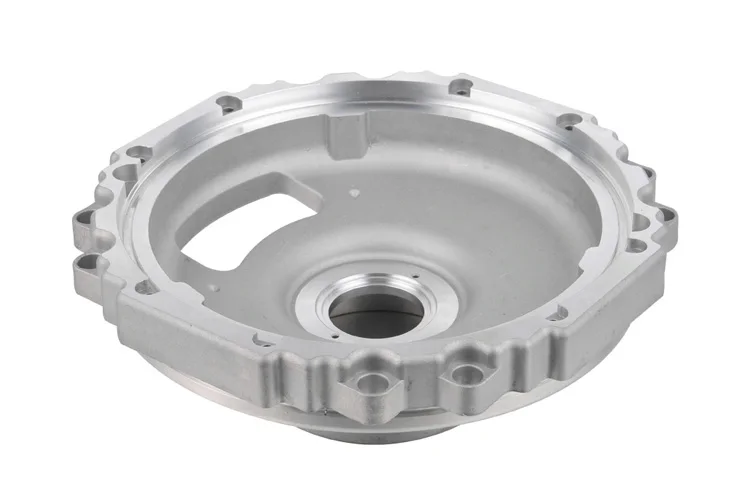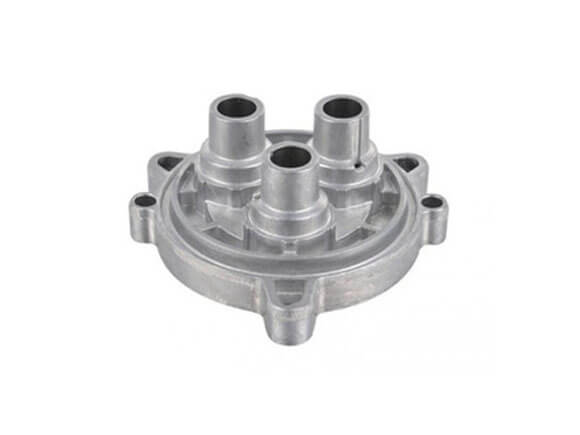The role of Precision aluminum casting in achieving accuracy
Understanding the Environmental Advantages of Aluminum Shop Techniques
Aluminum foundry strategies play an important duty beforehand sustainability within the manufacturing market. By carrying out advanced reusing techniques and energy-efficient methods, these techniques greatly reduce waste and carbon impacts. Ingenious casting methods better enhance source preservation initiatives. As markets significantly focus on environmental responsibility, comprehending the complete impact of these practices becomes vital. What certain developments are leading the way in this makeover?
The Role of Aluminum in Sustainable Manufacturing
Several products add to lasting manufacturing, light weight aluminum stands out due to its special buildings and recyclability. This lightweight metal is not just sturdy yet also has exceptional deterioration resistance, making it a perfect option for various applications, from auto to building and construction. Its high strength-to-weight proportion causes power financial savings during transport and use. Light weight aluminum can be recycled indefinitely without shedding its fundamental qualities, promoting a round economy.
The manufacturing procedure of light weight aluminum has advanced, integrating energy-efficient approaches that decrease carbon footprints. By making use of renewable energy sources, producers are significantly lessening the environmental effect related to aluminum manufacturing. Furthermore, making use of recycled aluminum needs substantially much less energy compared to extracting and improving key light weight aluminum, resulting in lower greenhouse gas discharges. As sectors seek lasting services, light weight aluminum's versatility and environment-friendly features placement it as a pivotal material in the pursuit of greener manufacturing practices.
Advanced Recycling Techniques in Aluminum Foundries
Advanced recycling methods in light weight aluminum foundries are revolutionizing the means scrap light weight aluminum is processed and reused. Innovative methods, such as closed-loop recycling systems, allow factories to recover light weight aluminum from production waste and out-of-date items effectively. These systems reduce material loss and boost the top quality of recycled light weight aluminum, making it a feasible choice to key aluminum manufacturing.
Additionally, progressed arranging innovations, consisting of automated optical sorting and X-ray fluorescence, enhance the separation of light weight aluminum from other materials, ensuring greater pureness levels in recycled outcomes. This precision minimizes contamination, which can jeopardize the honesty of the end product.
In addition, the integration of advanced melting modern technologies, such as induction melting and energy-efficient furnaces, simplifies the reusing process, lowering energy consumption. Collectively, these advancements add to a more lasting light weight aluminum sector by reducing dependence on virgin products and lowering greenhouse gas emissions related to light weight aluminum manufacturing.
Energy Efficiency Improvements in Factory Workflow
Power performance improvements in aluminum factory operations can greatly boost sustainability practices. Executing waste warm healing systems permits foundries to repurpose excess power, reducing total energy usage. Furthermore, improvements in procedure automation improve procedures, resulting in lowered waste and enhanced resource usage.
Waste Warm Healing
Applying waste warm recovery systems in light weight aluminum shops significantly enhances power effectiveness by catching and reusing excess thermal power generated throughout manufacturing procedures. These systems assist in the conversion of squandered heat into functional energy, which can be used for various applications within the factory, such as preheating products or powering equipment. By recovering warm that would certainly or else be removed into the atmosphere, foundries can markedly decrease their total power usage and greenhouse gas discharges. This approach not just decreases functional expenses but likewise promotes lasting practices within the market. Furthermore, the adoption of waste warmth healing innovations lines up with regulative standards focused on minimizing environmental impact, making it an important element of modern aluminum factory operations.
Process Automation Conveniences
Automating processes in aluminum foundries can significantly enhance power performance by enhancing production operations and decreasing waste. By executing sophisticated technologies such as robotics and device knowing, shops can simplify procedures, decreasing unneeded power usage. Automated systems promote exact control over temperature and material handling, making certain that power is made use of only when required. In addition, real-time tracking enables immediate modifications, decreasing the danger of power loss. The integration of automation not just improves performance however likewise reduces operational expenses, making factories a lot more affordable. Because of this, these energy-efficient practices contribute considerably to sustainability objectives, decreasing the ecological footprint of aluminum production while meeting boosting market needs - Aluminum Casting Company. Improved power efficiency through automation stands for a vital action in the direction of greener foundry procedures
Decreasing Waste Via Innovative Casting Approaches
Cutting-edge casting methods play a vital function in reducing waste in light weight aluminum foundries. Methods such as advanced molding and the use of recyclable products substantially decrease production scrap. These methods not just enhance effectiveness however also add to an extra lasting manufacturing procedure.
Advanced Molding Techniques
As markets increasingly focus on sustainability, advanced molding methods in aluminum factories emerge as reliable services for decreasing waste. These ingenious approaches, such as 3D printing and precision mold production, substantially improve the effectiveness of the spreading procedure. By using computer-aided style (CAD) and simulation technologies, manufacturers can optimize mold and mildew geometry, reducing material use while preserving item honesty. Additionally, progressed techniques enable the production of complicated shapes that traditional methods can not accomplish, imp source minimizing the demand for added machining and consequently decreasing scrap product. The adaptability of these methods permits fast prototyping, further decreasing lead times and energy intake. In general, the application of innovative molding methods represents a vital action towards environmentally accountable aluminum production, aligning with worldwide sustainability objectives.
Recyclable Material Usage
Recyclable products play a pivotal role in lowering waste within aluminum shops, changing the casting landscape through their effective use. By including scrap aluminum and other recyclable elements right into the production procedure, shops can substantially reduce the need for virgin products. This not just saves natural deposits but additionally lessens power intake related to mining and refining. Ingenious spreading methods, such as die casting and sand spreading, allow for smooth integration of these products, making sure high-grade outputs. Furthermore, using recyclable products promotes a circular economic situation, where sources are consistently reused and repurposed, decreasing land fill contributions. Ultimately, the calculated usage of recyclables enhances sustainability while advertising cost-effectiveness in light weight aluminum factory procedures.
Lessening Production Scrap

Life Process Assessment of Aluminum Products
Although aluminum is widely acknowledged for its long lasting and lightweight buildings, an extensive Life process Evaluation (LCA) discloses the environmental effects connected with its usage, manufacturing, and disposal. The LCA process analyzes the energy usage, greenhouse gas discharges, and source exhaustion connected to aluminum products from removal of bauxite ore to end-of-life management. Main aluminum production is energy-intensive, usually counting on fossil gas, which contributes significantly to carbon footprints. On the other hand, reusing aluminum offers considerable ecological benefits, as it utilizes just a fraction of the power required for primary production. Additionally, the recycling process decreases garbage dump waste and conserves natural deposits. The LCA also takes into consideration the product's longevity and capacity for reuse, emphasizing the value of lasting style. Generally, comprehending the life process impacts of light weight aluminum items is important for making educated choices that prioritize environmental sustainability within the sector.
Situation Researches: Successful Sustainable Practices in the Industry
The aluminum market has actually started to accept cutting-edge lasting methods that resolve the ecological difficulties recognized in Life process Assessments. One remarkable situation is a leading shop that applied a closed-loop recycling system, significantly lowering waste and energy usage. By reusing scrap aluminum in manufacturing, the facility accomplished a 40% decrease in its carbon footprint.
An additional instance entails a maker that embraced renewable resource sources, powering its procedures with solar and wind power - aluminum casting. This change not only reduced greenhouse gas discharges however also boosted the firm's credibility among environmentally aware customers
Additionally, a 3rd factory has purchased advanced casting strategies, which optimize material use and minimize defects, additionally reducing source consumption. These instance studies show that the light weight aluminum industry can incorporating lasting techniques, demonstrating both ecological responsibility and economic viability, ultimately adding to an extra lasting future.
Frequently Asked Inquiries
How Does Aluminum Compare to Other Steels in Sustainability?
Aluminum is generally taken into consideration much more sustainable than several steels as a result of its recyclability, reduced power demands for manufacturing, and look at here lowered environmental effect. Its lifecycle performance surpasses that of steel and copper in various applications.
What Is the Carbon Impact of Light Weight Aluminum Shop Processes?
The carbon footprint of aluminum shop procedures differs, commonly varying from 4 to 15 statistics bunches of carbon dioxide per load of light weight aluminum generated. Factors affecting this include power resources, technology, and the efficiency of operations.
Are There Health Risks Linked With Light Weight Aluminum Shop Operations?

What Are the Prices Connected With Lasting Light Weight Aluminum Techniques?
The expenses linked with lasting aluminum methods include higher initial financial investments in modern technology, prospective rises in operational expenditures, and continuous maintenance. Nonetheless, these are often countered by long-lasting cost savings and lowered environmental impact.
Exactly How Does Aluminum Recycling Impact Local Communities?
Aluminum recycling positively effects regional communities by producing tasks, minimizing landfill waste, and decreasing power costs. It fosters financial development and promotes environmental stewardship, leading to healthier living problems and enhanced community engagement in sustainability efforts.
Additionally, the use of recycled aluminum calls for considerably much less energy contrasted to drawing out and refining key aluminum, leading to lower greenhouse gas emissions. Advanced recycling techniques in light weight aluminum foundries are revolutionizing the way scrap light weight aluminum is processed and recycled. aluminum casting. Applying waste heat healing systems in aluminum factories substantially boosts energy efficiency by catching and reusing excess thermal power produced during manufacturing processes. Automating procedures in aluminum factories can substantially boost energy effectiveness by maximizing manufacturing operations and lowering waste. The carbon impact of aluminum foundry processes varies, commonly varying from 4 to 15 statistics heaps of Carbon dioxide per ton of aluminum produced